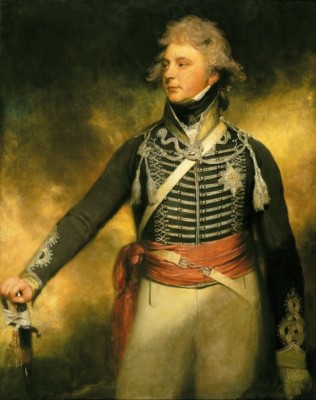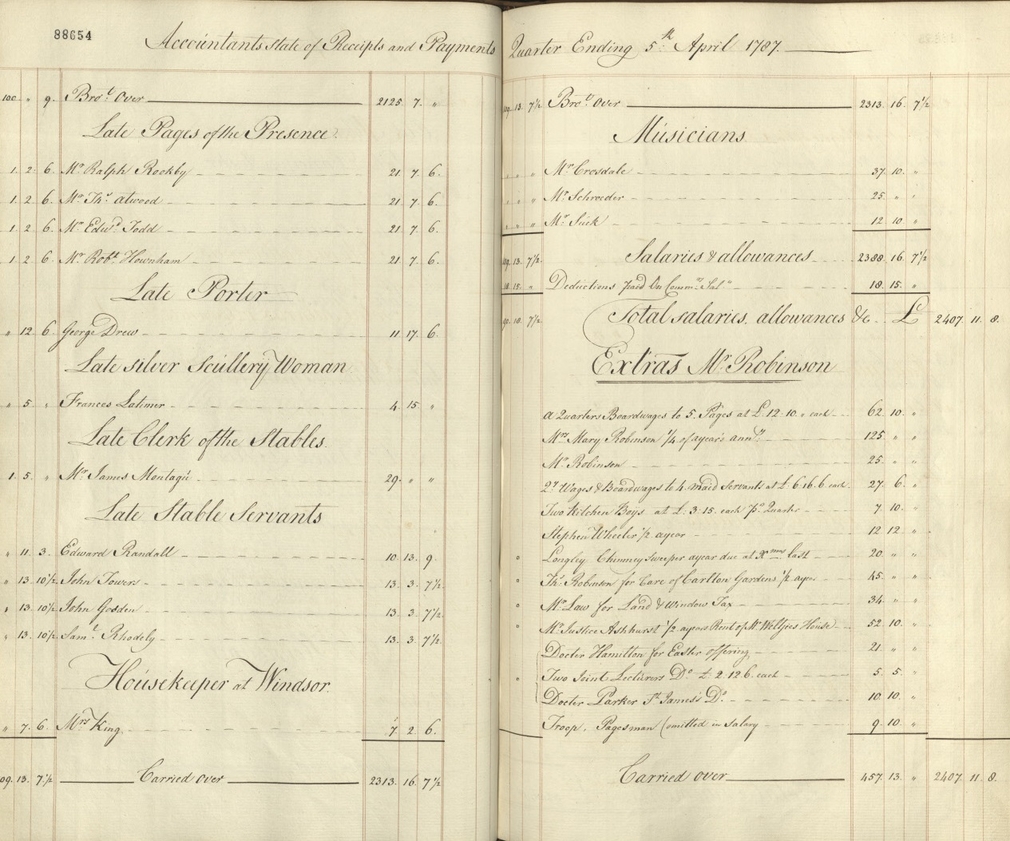
George IV (1762-1830) when Prince of Wales 1803, RCIN 400511. Royal Archives/© Her Majesty Queen Elizabeth II 2019
George IV is well-known for his extravagance as the multitude of financial records within the Georgian Papers attest. There are 38 boxes of bills relating to his purchases alone, that’s as many boxes as there are for the entirety of George III’s official correspondence! Added to this is also a sequence of 25 account books which are now available online. Exactly how these bills and account books relate to each other and how they relate to the inventories of goods delivered to Carlton House (collection GEO/ADD/19) is yet to be determined.
Some of these account books contain entries that you would typically expect of a Prince well-known for partying, such as a payment of £125 to former mistress Mary Robinson in April quarter 1787 (GEO/MAIN/88654), or the £105 paid the following year to Captain Williams for ‘Conway Races’ (GEO/MAIN/88695). However, some payments cause us to re-evaluate these existing perceptions. There are also frequent payments to charitable causes such as a donation of £105 to the ‘Welsh Society’ [Welch Charity School] in 1788 and a subscription to the lying-in hospitals (GEO/MAIN/88678) or regular payments to Joseph Clark who appears to have been blinded while in the course of the Prince’s employment (GEO/MAIN/42947). Similarly a payment of £53 11s to Robert Brettell Bate, mathematical instrument maker, in July 1825 (in GEO/MAIN/35593) prompts us to reconsider George IV’s interests, as opposed to his tastes, more widely.

Extract from account book of the Prince of Wales, showing payment to Mary Robinson, 1787, GEO/MAIN/88654 Royal Archives/© Her Majesty Queen Elizabeth II 2019
These account books also demonstrate some of the attempts to keep the Prince’s finances under control such as the Trust account book, 1803-1812 and the account book of the sinking fund set up under the 1803 Act of Parliament ‘An act for enabling His Majesty to settle an annuity on his Royal Highness the Prince of Wales…’. This Act granted the Prince of Wales an annuity of £60,000 out of the Consolidated Fund of Great Britain for the following 3 years but the Prince was required to set up a sinking fund for the repayment of his debts. This account was lodged at Coutts from April 1803 with responsibility for disbursements vested in Samuel Hulse, William Adam, and Robert Gray. Many of these account books appear to be in Gray’s small, meticulous hand as payments were often made out of the revenues of the Duchy of Cornwall and Gray’s name can also be found on the reverse of many bills submitted to him in the course of his work as Deputy to the Auditor and Surveyor-General of the Duchy of Cornwall.

Wardrobe account book for George, Prince of Wales 1800-1812, GEO/MAIN/43058-43105 Royal Archives/© Her Majesty Queen Elizabeth II [2019]
Further relevant financial papers relating to George IV– some of which were themselves purchased by the Royal Archives – have already been published online in the collection of Georgian accounts. These are copy bonds and assignments of debts, 1793-1795; a register of debentures, 1796-1806; and a quarterly account book, 1795-1796 that curiously has been also (later) used as a scrapbook for a collection of seaweed! Other papers relating to the management of the debts of the Prince (including the minutes of the Commissioners for the Prince’s debts) will be published at a later stage in the Georgian Papers Programme.
